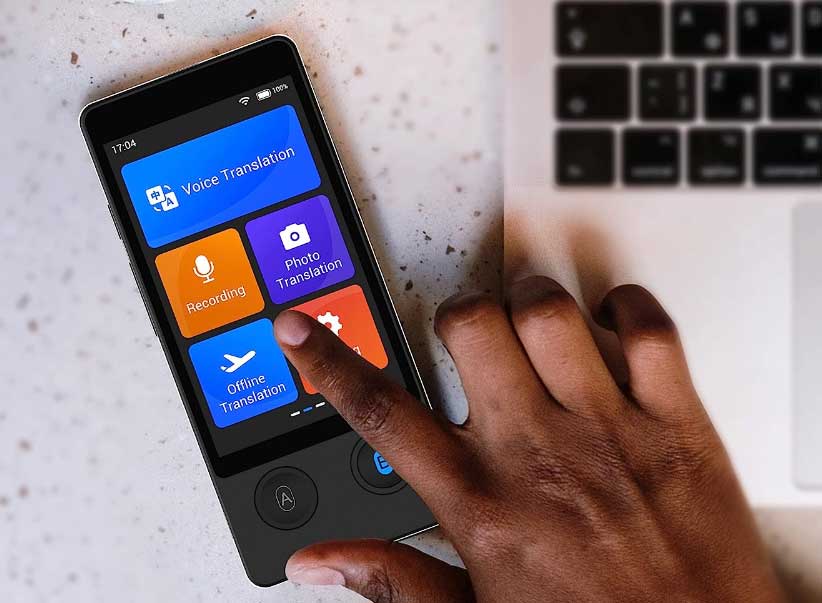In today's globalized world, effective communication is more important than ever, and translating devices for ears have emerged as a groundbreaking solution. These innovative gadgets allow users to converse in different languages seamlessly, breaking down barriers and fostering understanding across cultures. As travel, business, and online interaction become increasingly international, the demand for reliable translation technology continues to grow.
This comprehensive guide explores the various types of translating devices available, their features, benefits, and how they can enhance your communication experience. Whether you're a frequent traveler, a business professional, or simply someone curious about technology, understanding these devices is crucial for navigating a multilingual world.
By the end of this article, you'll have a deep understanding of translating devices, their applications, and how they can improve your interactions in diverse linguistic environments.
Table of Contents
- What Are Translating Devices?
- How Do Translating Devices Work?
- Benefits of Translating Devices
- Types of Translating Devices
- Top Translating Devices on the Market
- Choosing the Right Translating Device
- The Future of Translating Devices
- Conclusion
What Are Translating Devices?
Translating devices are electronic gadgets designed to facilitate real-time translation of spoken language. These devices typically utilize advanced speech recognition, machine learning, and artificial intelligence to interpret and translate languages instantly.
With the help of translating devices, users can engage in conversations without the need for a human translator, making them an invaluable tool for travelers, expatriates, and business professionals.
Key Features of Translating Devices
- Real-time translation capabilities
- Multiple language support
- Compact and portable design
- User-friendly interface
- Wi-Fi and Bluetooth connectivity
How Do Translating Devices Work?
Translating devices function by capturing spoken language through built-in microphones. Once the speech is detected, the device converts the audio into text using speech recognition technology. The text is then translated using advanced algorithms and machine learning models before being converted back into speech in the selected language.
Most translating devices require an internet connection to access cloud-based translation services, while others may offer offline translation capabilities with pre-installed language packs.
Benefits of Translating Devices
Translating devices offer numerous advantages, making them essential tools for individuals navigating multilingual environments. Here are some key benefits:
- Enhanced Communication: These devices enable smooth conversations between speakers of different languages.
- Time-Saving: Instant translations reduce the need for lengthy explanations or waiting for a translator.
- Increased Confidence: Users can engage in conversations without the fear of language barriers.
- Accessibility: Translating devices are often designed to be user-friendly, making them accessible to people of all ages.
Types of Translating Devices
There are several types of translating devices available on the market, each catering to different needs and preferences:
1. Earbud Translators
These are wireless earbuds that provide real-time translation directly into the user's ears. They are particularly popular among travelers and business professionals who need discreet and efficient communication.
2. Handheld Translators
Handheld devices typically feature a screen and buttons, allowing users to speak or type in their language for translation. They are ideal for users who prefer a visual interface and may need to translate written text as well.
3. Smartphone Apps
Many translation apps are available for smartphones, offering similar functionality to dedicated devices. While they may not provide the same level of convenience as standalone devices, they are often free or low-cost alternatives.
4. Wearable Translators
These devices are integrated into clothing or accessories, providing hands-free translation. They are suitable for users who want a seamless experience without holding a device.
Top Translating Devices on the Market
Several translating devices have gained popularity due to their performance and reliability. Here are some of the top options:
| Device Name | Type | Languages Supported | Battery Life |
|---|---|---|---|
| Google Pixel Buds | Earbud | Multiple | 5 hours |
| WT2 Plus | Earbud | 40+ | 6 hours |
| ili Instant Translator | Handheld | 3 | 3 hours |
| Langogo Genesis | Handheld | 105+ | 12 hours |
Choosing the Right Translating Device
When selecting a translating device, consider the following factors:
- Language Support: Ensure the device supports the languages you frequently encounter.
- Battery Life: Choose a device with sufficient battery life for your needs, especially for travel.
- Portability: Look for a compact and lightweight device that is easy to carry.
- Connectivity: Check if the device requires Wi-Fi or can function offline.
The Future of Translating Devices
The future of translating devices looks promising as technology continues to advance. Innovations in artificial intelligence and neural machine translation are expected to improve the accuracy and fluency of translations significantly. Additionally, advancements in hardware will lead to more compact and efficient devices, making translation technology more accessible to everyone.
Conclusion
Translating devices for ears represent a significant leap forward in communication technology, enabling individuals to connect across language barriers effortlessly. With a variety of options available on the market, users can choose devices that best suit their needs, enhancing their experiences in diverse environments.
As you explore the world of translating devices, consider how they can improve your communication and interactions in multilingual settings. Share your thoughts in the comments below, and don't hesitate to explore more articles on our site for additional insights and information.
Final Thoughts
In an increasingly interconnected world, the ability to communicate effectively across languages is invaluable. Translating devices not only facilitate conversations but also foster cultural understanding and collaboration. We encourage you to stay informed about the latest advancements in translation technology and to embrace the opportunities they present.



